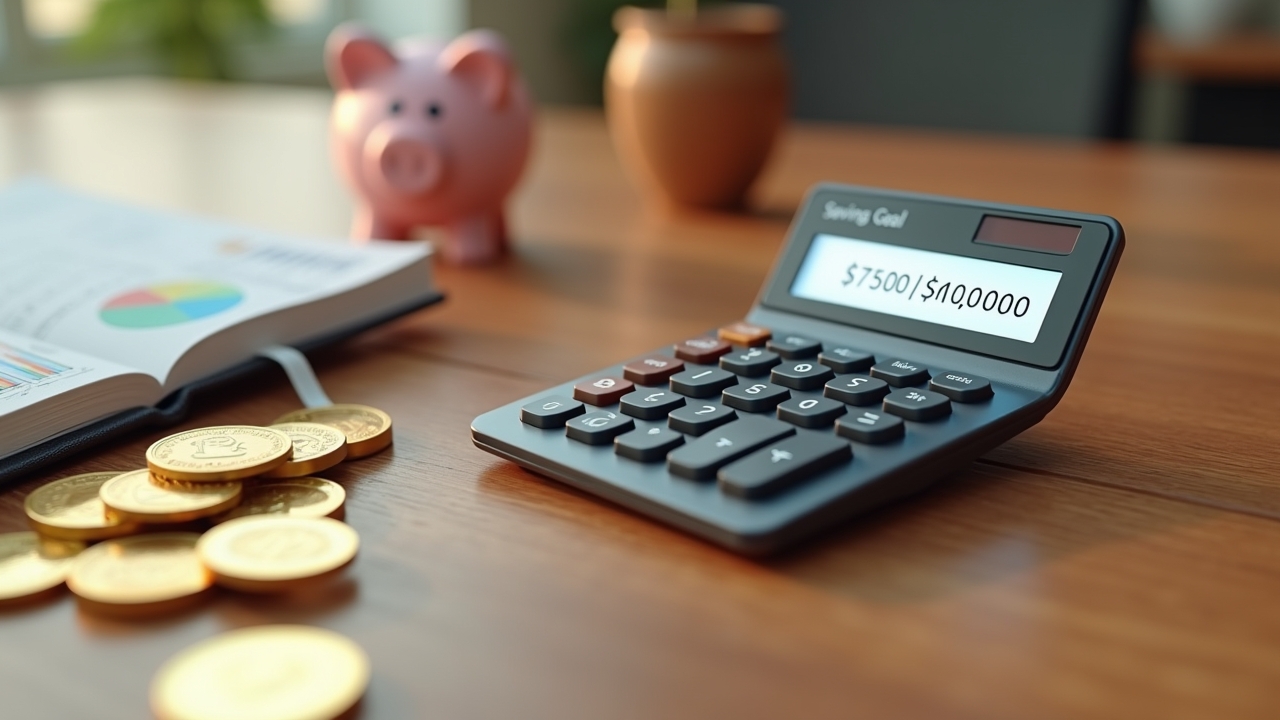Advertisements
Did you know that nearly 40% of Americans can’t cover a $400 emergency expense without borrowing money or selling something? That statistic hit me like a ton of bricks when I first read it in a Federal Reserve report. I was sitting there, pretty smug about my own financial situation, when I realized I wasn’t much better off myself!
An emergency fund calculator isn’t just some fancy financial tool – it’s your roadmap to peace of mind. Trust me, I learned this the hard way when my car decided to have a complete meltdown right before Christmas one year.
Why I Almost Cried Over a Broken Transmission

Picture this: December 23rd, 2019. I’m driving to pick up last-minute gifts when my car starts making this god-awful grinding noise. Long story short, my transmission was toast, and the repair bill was going to be $3,200.
Advertisements
At that time, I had maybe $800 in my savings account. The rest of my money was tied up in investments that I really didn’t want to touch. That’s when I discovered emergency fund calculators, and honestly, they were a game-changer for my financial planning.
An emergency fund calculator helps you figure out exactly how much money you should stash away for those “oh crap” moments in life. It takes into account your monthly expenses, income stability, and personal risk factors to give you a realistic savings target.
The Magic Behind Emergency Fund Calculations
Most financial experts recommend saving 3-6 months of expenses, but that’s pretty vague, right? An emergency fund calculator gets way more specific than that.
Here’s what these calculators typically consider:
- Your monthly fixed expenses (rent, utilities, insurance)
- Variable costs like groceries and gas
- Job security and income stability
- Number of dependents
- Current debt obligations
I remember plugging my numbers into a NerdWallet emergency fund calculator for the first time. The result was both enlightening and terrifying – I needed about $18,000 in my emergency fund, and I had less than a grand!
My Personal Formula (That Actually Works)
After using several different calculators and tweaking things based on my own experiences, I’ve developed what I call my “sleep-well-at-night” formula. It’s not rocket science, but it’s served me well.
I multiply my essential monthly expenses by 4-8 months, depending on my current situation. When I was freelancing full-time, I aimed for 8 months because my income was unpredictable. Now that I have a more stable job, I’m comfortable with 5-6 months.
The key is being honest about what counts as “essential.” That Netflix subscription might feel essential, but it’s not going to make or break you during a real emergency.
Common Mistakes I Made (So You Don’t Have To)
Let me save you some headaches by sharing my biggest emergency fund blunders. First mistake? I was way too optimistic about my expenses.
I calculated my emergency fund based on my absolute bare-bones budget – rice and beans, no eating out, zero entertainment. But when I actually lost my job for three months in 2021, I discovered that being stressed makes you spend money in weird ways. Comfort food, anyone?
Second mistake was not accounting for the fact that emergencies often come in clusters. My car broke down, then my laptop died, then I had a minor medical issue all within six weeks. It’s like the universe has a twisted sense of humor sometimes.
The Insurance Factor Nobody Talks About
Here’s something most emergency fund calculators don’t emphasize enough – your insurance coverage dramatically affects how much you need to save. I learned this when I had to use my emergency fund for a medical issue that my insurance only partially covered.
If you have comprehensive health insurance, disability insurance, and decent car coverage, you might not need as large an emergency fund. But if you’re like most people with high-deductible plans, you’ll want to factor those potential out-of-pocket costs into your calculations.
Making It Less Overwhelming
When that emergency fund calculator spits out a number like $20,000 and you’ve got $47 in your checking account, it’s easy to feel defeated. Don’t give up!
Start small. Even $500 can handle a lot of minor emergencies. I tell people to aim for $1,000 first, then work toward one month of expenses, then gradually build up to their full target.
The Mint emergency fund calculator actually has a cool feature that breaks down your savings goal into monthly targets. It makes the whole process feel way less intimidating when you see you only need to save $300 a month instead of thinking about that massive lump sum.
Your Next Steps to Financial Peace of Mind

Look, I’m not going to sugarcoat this – building an emergency fund takes time and discipline. But having that financial cushion has saved my sanity more times than I can count.
Start by using a few different emergency fund calculators to get a range of target amounts. Then pick a number that feels challenging but achievable for your situation. Remember, the best emergency fund is the one you’ll actually build and maintain.
Most importantly, don’t let perfect be the enemy of good. Any emergency fund is better than no emergency fund, even if it’s not the “ideal” amount some calculator told you to save.
Want more practical financial tips and tools to simplify your money management? Check out our other helpful guides at Daily Tech Hub – we’re always sharing real-world advice that actually works in everyday life.



